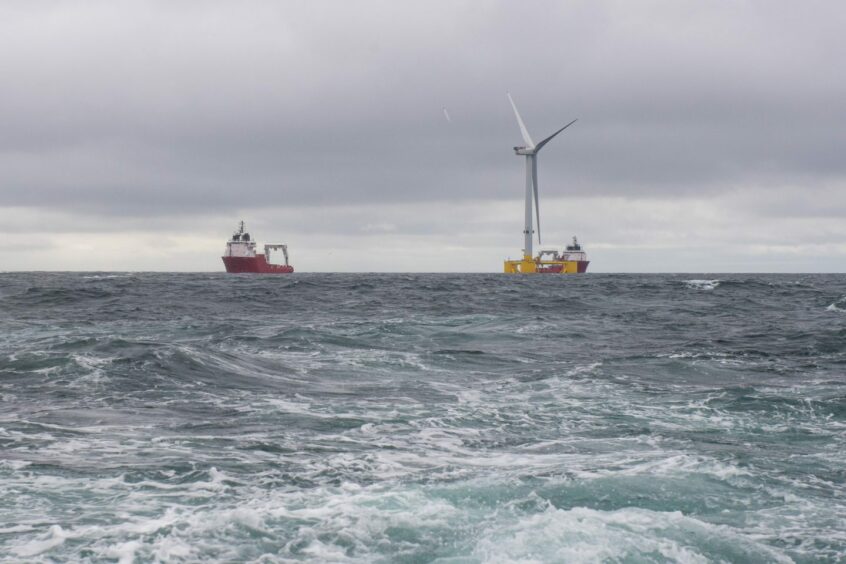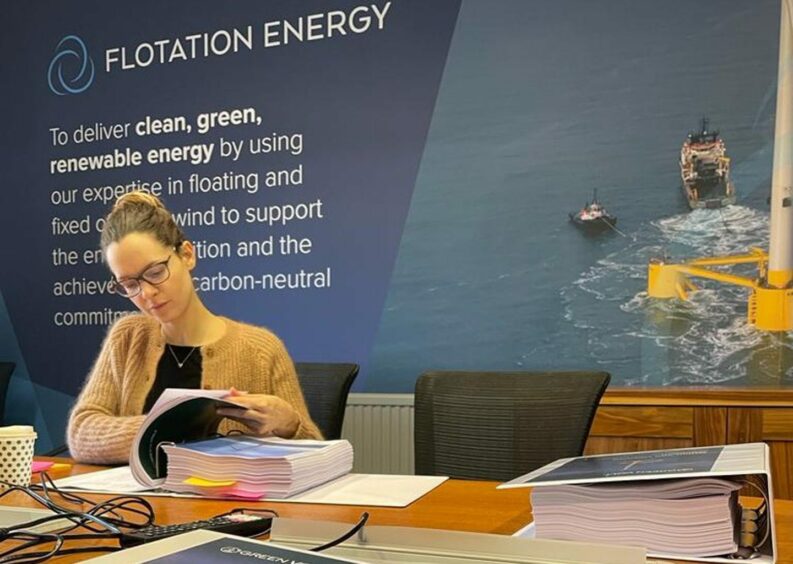 © Supplied by KATH FLANNERY / DC T
© Supplied by KATH FLANNERY / DC T Floating offshore wind represents a huge opportunity for Scotland’s economy and labour force, with many tens of gigawatts of development expected over the coming decades. The initial leasing rounds for offshore wind provide promising foundations to build off. But we will only succeed in realising Scotland’s full potential as a world-leader in floating offshore wind if Scotland urgently invests in a local supply chain.
Across the globe, countries are looking to rapidly develop floating offshore wind. The playing field for becoming the global expert in delivering large-scale floating offshore wind projects remains wide open. But it will not remain that way for long.
Speed is therefore critical. While suppliers must see a clear long-term pipeline of large-scale projects before they are willing to invest in developing relevant capability and capacity, longer-term predictability will not spark supply chain development on its own – only concrete, near-term projects can achieve that.
Crucially, those projects must also be of a manageable size. Going from nothing today to large-scale projects of many gigawatts around 2030 is not credible without some stepping stones. Having several intermediate-scale projects in Scotland in the later 2020s therefore plays a pivotal role in local supply chain development.
The floating offshore wind projects developed under the Crown Estate’s Innovation and Targeted Oil and Gas (INTOG) leasing round are uniquely positioned to offer this nearer-term pipeline of project activity and drive innovation and supply chain development.
The experience suppliers can gain under early-mover INTOG projects will position them to securing larger contracts from 2030, both domestically and internationally.
Scottish suppliers have a huge international opportunity in a wide range of product and service areas. Existing capabilities that are relevant for the new floating offshore wind industry includes design and manufacture of mooring and anchoring systems, and dynamic cable systems. With further innovation, Scottish suppliers have the potential to develop capabilities in other areas relevant to floating offshore wind such as steel or concrete substructure components and substructures. Moreover, Scotland’s geographic position on the North Sea opens opportunities for closely collaborating with neighbouring countries to develop an integrated, complementary supply chain that is truly world-leading.
To tap into the narrow window of opportunity, each month and year matters. The early-mover projects being developed under INTOG, including our own Green Volt and Cenos projects, which we are developing together with local Scottish partner Flotation Energy, are currently on track for delivery dates of 2027 and 2028, respectively. However, if INTOG projects are only delivered a few years later, say by 2030, the Scottish supply chain risks missing its opportunity to be a first mover globally.
If we don’t develop a supply chain for floating wind here in the 2020s, that supply chain will instead develop elsewhere. When we then hit the 2030s and are ready to build out full-scale projects under the Scotwind leasing round and beyond, we could find ourselves reliant on supply chains in other countries. As we all know, the UK made this mistake with bottom-fixed offshore wind, where we find ourselves a global leader in installed capacity, but without maximising the potential for a domestic supply chain.
On top of this, if INTOG projects are delayed, they risk having to compete for limited supply chain capacity with a whole host of other floating wind projects that are aiming for delivery around 2030 and beyond. A fierce competition for scarce supply chain resources is brewing. This includes both projects developed under ScotWind and projects under development in other Northern European countries.
Floating offshore wind can have a huge positive impact on Scotland’s economy and the climate. Globally, 300 GW of floating offshore wind, the equivalent of 20,000 turbines, is expected to be installed in the next 30 years, according to DNV. If we succeed in establishing a world-leading supply chain centred on Scotland and the North Sea, this is the size of the prize waiting for us – let’s not miss the opportunity.

